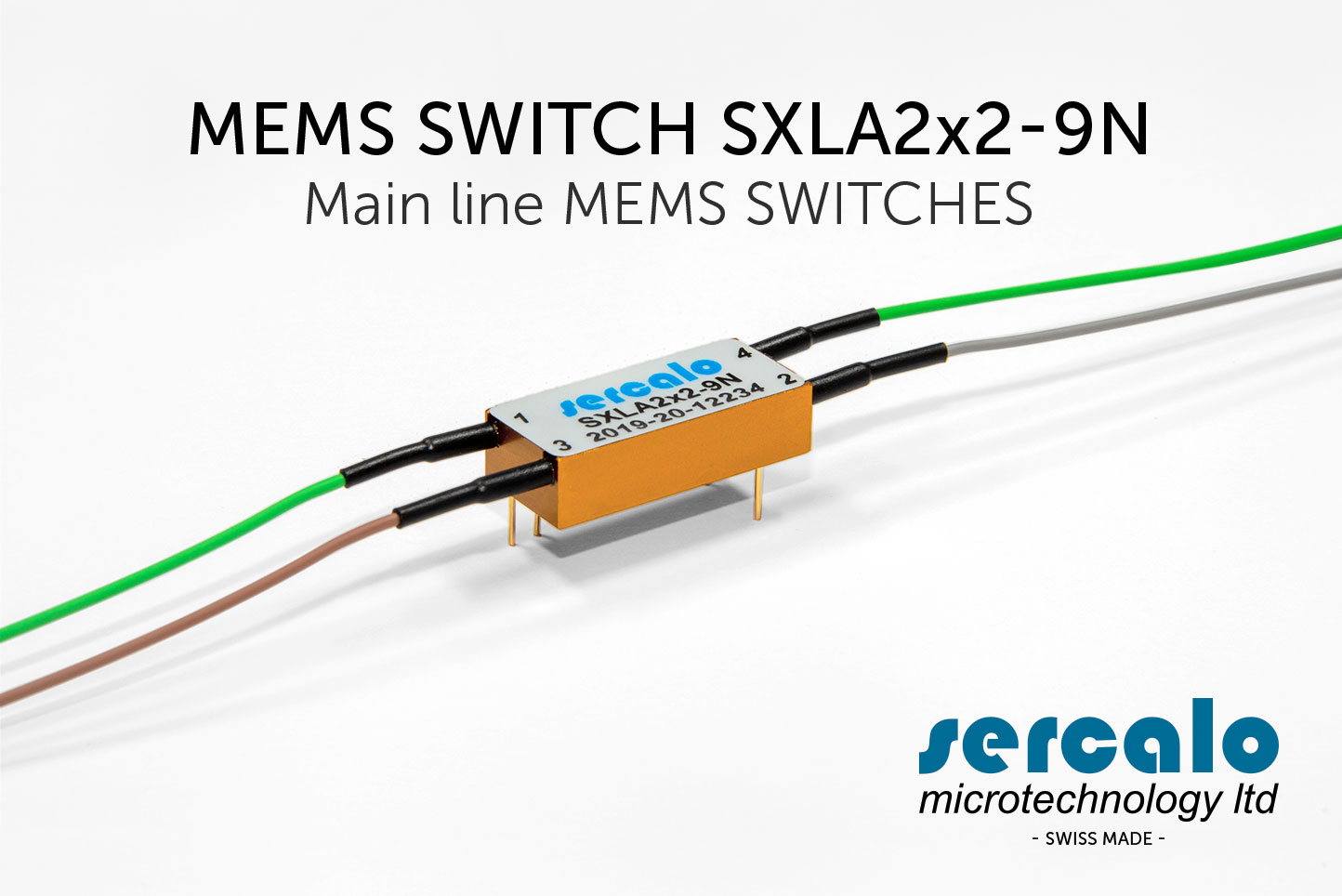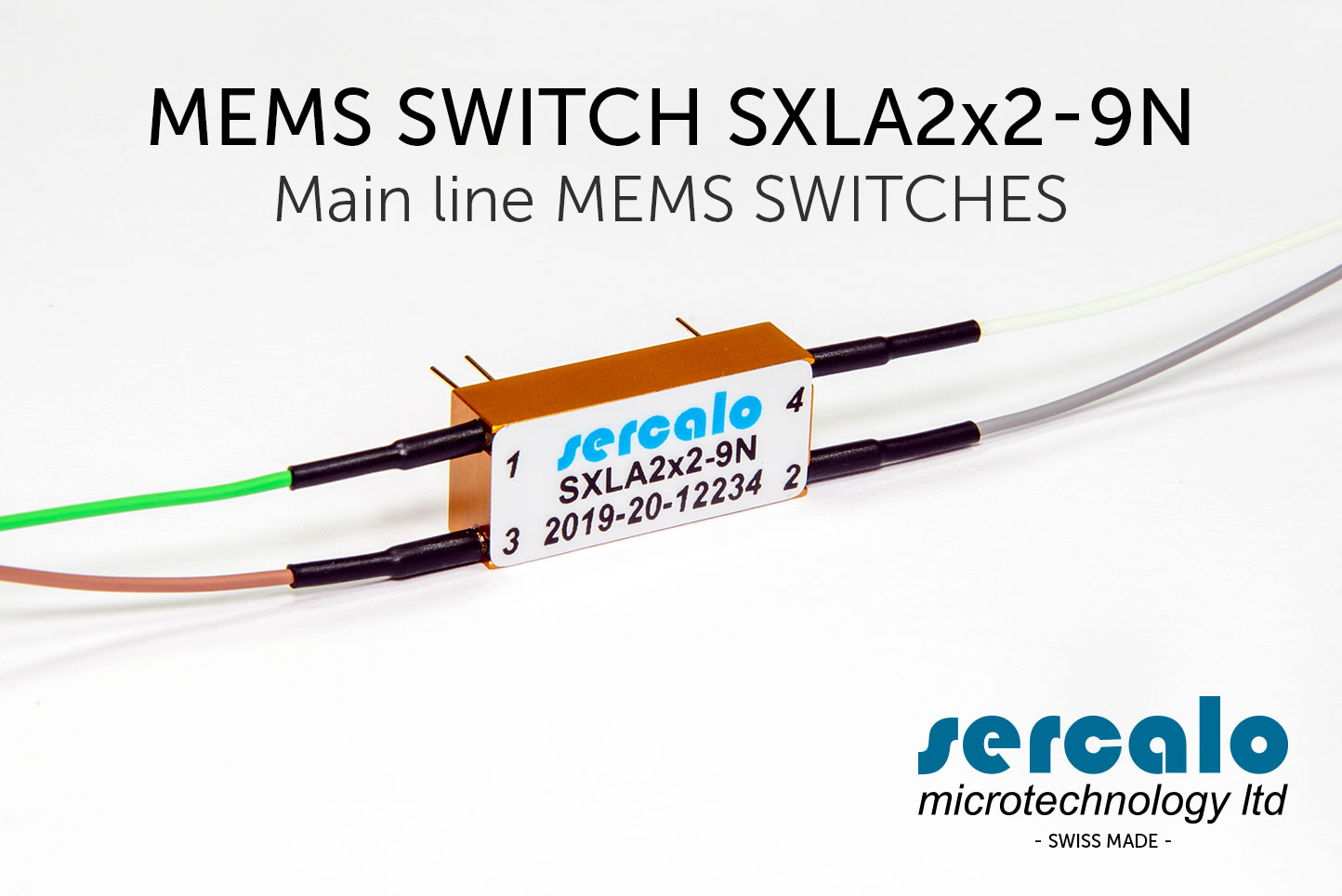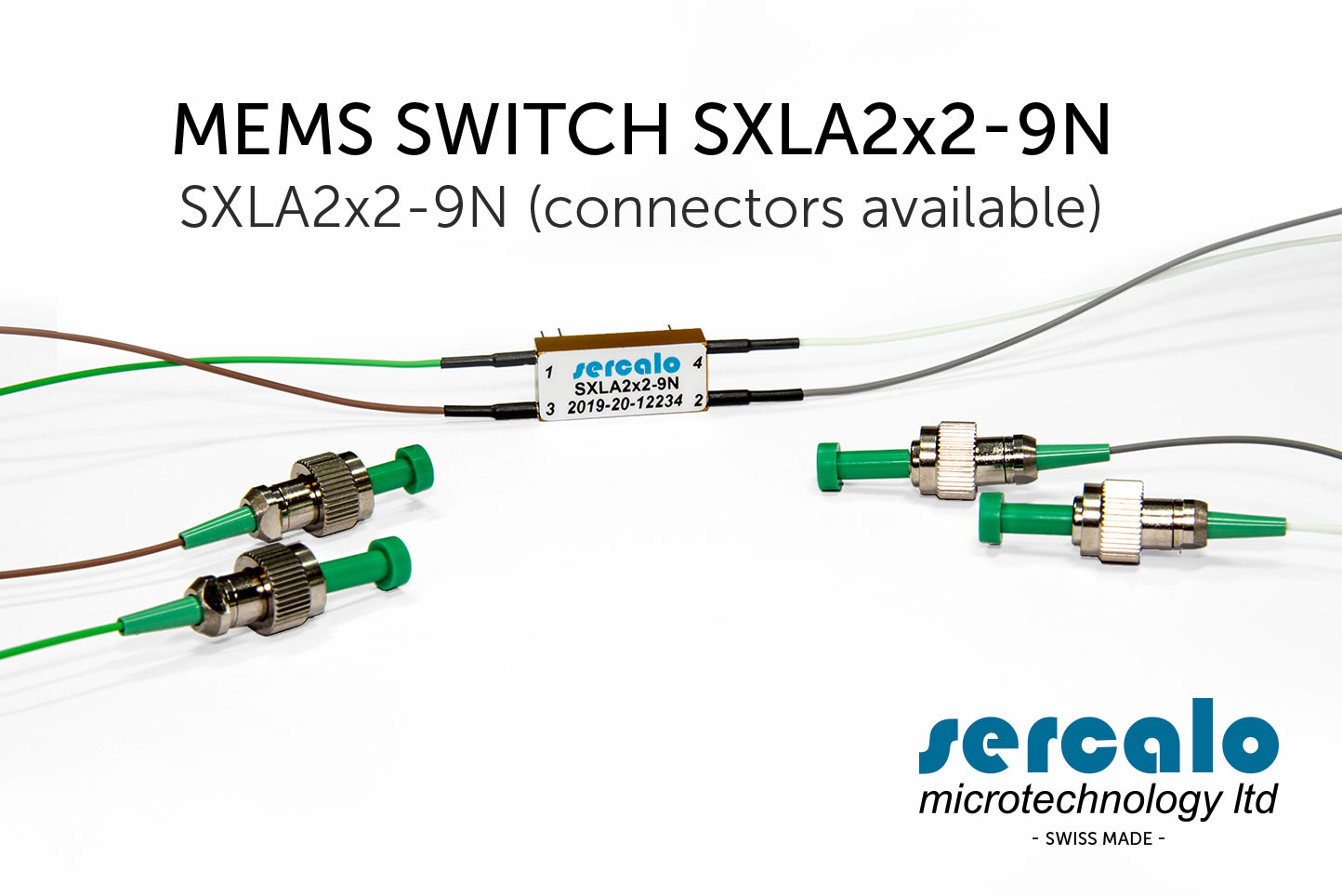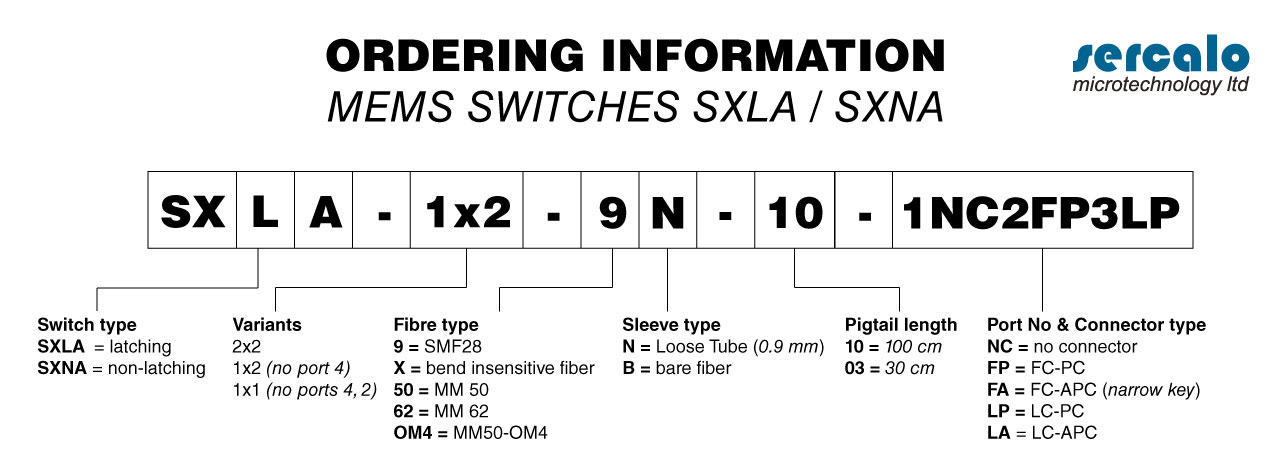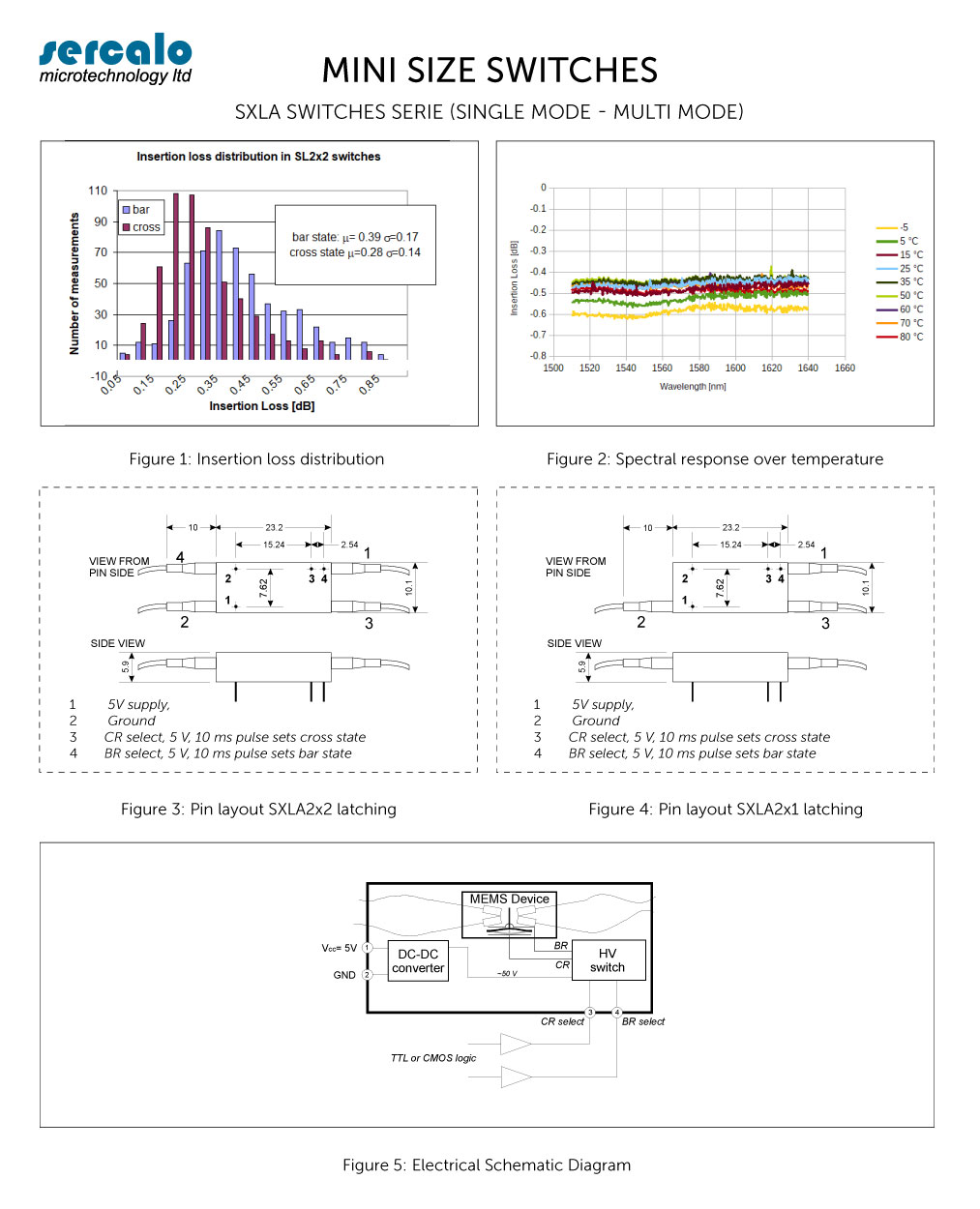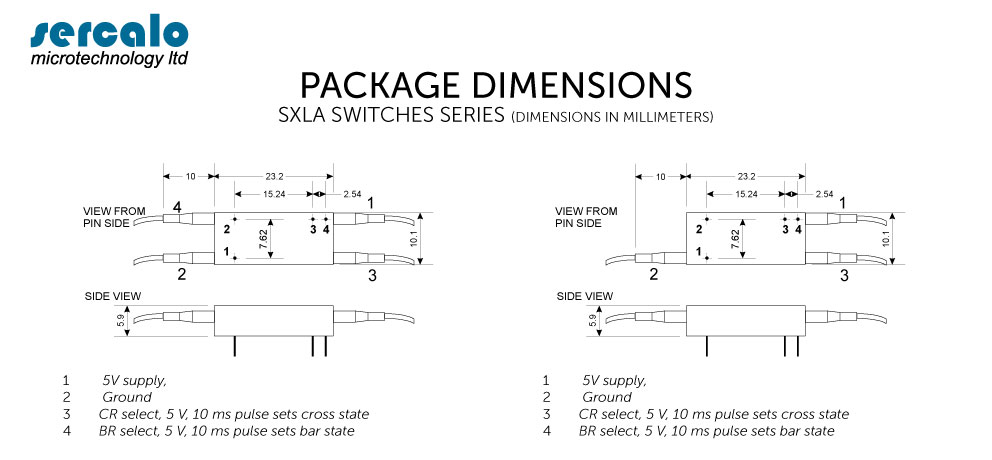MINIATURE LATCHING/NON LATCHING OPTICAL MEMS SWITCH SXLA/SXNA
The SXLA are latching type switches for fiber optic communication systems and submodules. The SXLA achieve excellent repeatability and reliability and is recommended for new designs. The single mode SXLA switch passes Telcordia GR1221 qualification. The switch is also available in multimode.
The miniature SX switch is available as latching variant, where a bistable suspension mechanism keeps the last selected state in power off. The non-latching type (i.e. SXNA) is not recommended for new designs.
| # | FEATURES | APPLICATIONS |
|---|---|---|
| 1 | 23 x 10 x 6 mm size | Protection Switching |
| 2 | Optimized for low-cost production | Reconfiguration |
| 3 | TTL or CMOS logic | Optical Subsystems |
| 4 | Latching | Array integration |
| 5 | 2x2, 2x1, 1x1 variants | Instrumentation Measurement |
| 6 | Single or multimode fiber | Medical |
